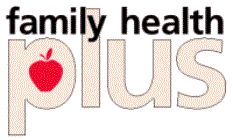DOH Medicaid Update November 2001 Vol.16, No.11
Office of Medicaid Management
DOH Medicaid Update
November 2001 Vol.16, No.11
State of New York
George E. Pataki, Governor
Department of Health
Antonia C. Novello, M.D., M.P.H., Dr. P.H.
Commissioner
Medicaid Update
is a monthly publication of the
New York State Department of Health,
Office of Medicaid Management,
14th Floor, Room 1466,
Corning Tower, Albany,
New York 12237
Table of Contents
Disaster Relief Medicaid/Family Health Plus
Dental Providers - Periapical Radiograph Billing Instructions
Insulin Pump Therapy for People With Diabetes
Smoking Cessation - Pharmacotherapy
Asthma Education
Need Help Getting Answers to Your Questions?
Family Health Plus
The New York State Department of Health, in cooperation with the New York City Human Resources Administration Medical Assistance Program and the federal government, has established a special program called Disaster Relief Medicaid/Family Health Plus (FHPlus). This program is helping families in New York City to get health care in the aftermath of the World Trade Center tragedy.
Families can apply for Disaster Relief Medicaid/FHPlus at various locations throughout New York City. A complete list of designated sites can be found on the Department website at:
This site is no longer available because the program has expired.
Applicants use a one-page application that asks for information about household size, income and other insurance.They can attest to the accuracy of the information provided, without supplying additional documentation. These applications will be accepted through January 2002.Applicants for the prenatal care assistance program (PCAP), nursing home and other residential long term care coverage must follow normal Medicaid application procedures.
Families who meet the income standards will be eligible for four months of Disaster Relief Medicaid/FHPlus coverage. This program provides all health services normally covered by Medicaid. As proof of eligibility, applicants will receive a numbered form called a Temporary Medicaid Authorization (DSS-2831A). They can take this form to a Medicaid provider and receive health care services. Providers must accept this form as proof of Medicaid coverage. Disaster Relief/FHPlus coverage is not reflected on the EMEVS system. Therefore, providers should not attempt to use EMEVS to verify Disaster Relief Medicaid/FHPlus coverage. The coverage period is shown in the upper right corner of the Temporary Medicaid Authorization.
Other rules that normally apply to Medicaid have also been suspended for this program. A family's coverage will end after four months without additional notices or rights to request a hearing. Families who wish to continue receiving health coverage beyond the four months must fill out a new full application for Medicaid/ Family Health Plus when Disaster Relief coverage ends.
For additional information, providers should refer to the "Dear Provider" letter issued by the Department September 26, 2001, which described the process for obtaining Disaster Relief Medicaid/FHPlus, as well as instructions relating to claims submission problems associated with the World Trade Center Disaster.
The Department appreciates the cooperation we have received from the provider community during this disaster. We remain confident that as a provider and responsible member of the health care community, you will continue to provide Medicaid and Disaster Relief Medicaid/FHPlus recipients with any medically necessary service.
DENTAL PROVIDERS
Periapical Radiograph Billing Instructions
Return to Table of Contents
Please review the following information from the procedure code section of the Medicaid Management Information System (MMIS) provider manual. This is important because it helps providers bill for periapical radiograph claims properly and minimize conflicting claim denials.
Procedure Code Description
00220 Periapical first film
To be billed only for the first periapical film when only periapical films are taken
00230 Periapical each additional film
When periapical films are taken in conjunction with bitewing(s), occlusal films or a panoramic radiograph, use procedure code 00230 for all periapical films. The total fee for additional intraoral films may not exceed the total fee allowed for a complete intraoral series.
Incorrect submission of claims for periapical radiographs may result in a claim denial for edit 00715: Procedure conflicts with previous service. Depending on how the claim or claims were submitted, it may be necessary to resubmit a new claim or/or submit an adjustment claim. Instructions for submission of adjustments and voids may be found in the billing section of the MMIS provider manual.
Providers making inquiries or requesting billing training by Regional Representatives should contact Computer Sciences Corporation (CSC) by calling the appropriate number below. Please be prepared to supply your Medicaid Provider identification number.
Practitioner Services (800) 522-5518 (518) 447-9860
Institutional Services (800) 522-1892 (518) 447-9810
Professional Services (800) 522-5535 (518) 447-9830
NEW LABORATORY SERVICES AND THE ORDERING PROCESS
Update on In Vitro Drug Resistance Genotype Assay Testing
Return to Table of Contents
Effective for dates of service on or after September 26, 2001 , laboratory providers may claim reimbursement for In Vitro Drug Resistance Genotype Assay testing using the Visible Genetics Truegene HIV Genotyping Kit and Open Gene DNA Sequencing System.
Laboratories should use MMIS procedure code 87901 when billing for the HIV genotypic assay. The maximum reimbursable amount for code 87901 is $350.
HIV drug resistance testing is a covered service when clinically indicated, up to a maximum of 3 tests per recipient per patient treatment year.
The limit applies to tests employing either one specific test procedure or tests employing a combination of multiple procedures (e.g., one HIV phenotypic and two HIV genotypic tests would be the maximum permitted for a patient in a 12-month treatment period).
Laboratories, designated AIDS centers, residential health care facilities, and ordering practitioners are reminded of the following payment policies applicable to all laboratory testing, including HIV drug resistance testing:
- Laboratories may not bill on a fee-for-service basis for a test performed while a patient is in hospital inpatient status. Medicaid payment to the hospital includes all necessary laboratory services.
- All ordered HIV drug resistance tests are reimbursable fee-for-service directly to the testing laboratory. This includes tests ordered for:
- Outpatients and inpatients of Article 28 residential health care facilities,
- Patients of Designated AIDS Centers operating under the Tier AIDS payment structure, and,
- Patients of Article 28 certified outpatient clinics.
- Medicaid regulation requires that:
- payment be made to the provider actually performing the test, and,
- Medicaid-enrolled clinical laboratories with Department of Health approval to perform HIV genotypic assays for drug resistance are entitled to reimbursement.
Questions regarding this article should be directed to the New York State Department of Health, Bureau of Policy Development and Agency Relations, at (518) 473-5873.
Insulin Pump Therapy for People with Diabetes
Return to Table of Contents

The primary goal of diabetes management is to maintain near normal glycemic levels to achieve maximum prevention of complications.The American Diabetes Association recommends maintenance of an HbA1c of <7%, while in August 2001, the American College of Endocrinology and the American Association of Clinical Endocrinologists lowered their target for glycemic control to 6.5% HbA1c. The use of insulin pump therapy, in selected patients, facilitates maintenance of tight glycemic control.
The pump delivers insulin in a more physiologic manner. The delivery of insulin is in small, continuous amounts, much like the pancreas. Insulin pumps use only fast acting insulin, much like the body produces. The delivery is accurate and consistent. The insulin delivery can be better matched to patient need for:
- Basal Rate: slow, continuous infusion of insulin to cover the background insulin requirements.
- Bolus: a larger amount of insulin delivered "now" like an injection, to cover a meal or to correct a high blood sugar.
Pumps are especially helpful for the following indications: poor HbA1c control, frequent hypoglycemia such as "dawn" or "Somogyi" phenomenon, anyone who is active or athletic, has a demanding lifestyle, does shift work, is planning a pregnancy, or has complications such as gastroparesis. A patient is a candidate for an insulin pump if he or she is motivated to achieve better blood sugar control and is willing to follow through with a diabetes treatment plan (q.i.d. blood sugar testing), a meal plan and makes most of their scheduled appointments.
Insulin pumps are covered by the Medicaid Program as durable medical equipment via prior approval using code E0784 External ambulatory infusion pump, insulin based on medical necessity and appropriateness of care. Orders for insulin pumps must originate from an endocrinologist.
For information on obtaining prior approval for an insulin pump, please contact the Bureau of Medical Review and Payment's Prior Approval Unit at (518) 474-8161.
For additional information regarding Medicaid payment on other medically necessary care, services and supplies for the diagnosis and treatment of diabetes, please contact the Bureau of Program Guidance at 518 474-9219.
Smoking Cessation - Pharmacotherapy
Fourth in a five part series
Return to Table of Contents

Pharmacotherapy may increase the effectiveness of a smoking cessation quit attempt. Higher abstinence rates are seen in patients that receive counseling and pharmacotherapy. Consideration should be given to certain patient groups (e.g., those with medical contraindications, those smoking fewer than 10 cigarettes a day, pregnant/breastfeeding women and adolescent smokers) when utilizing pharmacotherapy.
Pharmacotherapies--Factors a Clinician Should Consider
- Clinician familiarity with the medications
- Contraindications for selected patients
- Patient preference
- Previous patient experience with a specific pharmacotherapy (positive or negative)
- Patient characteristics(e.g., history of depression, concern about weight gain)
Pharmacotherapies for Lighter Smokers (10-15 cigarettes/day)
- Clinicians should consider reducing the dose of first-line nicotine replacement therapy (NRT) pharmacotherapies. No adjustments are necessary when using bupropion SR.
Pharmacotherapies for Patients Concerned About Weight Gain
- Bupropion SR and nicotine replacement therapies, in particular nicotine gum, have been shown to delay but not prevent, weight gain.
Pharmacotherapies for Patients with a History of Depression
- Bupropion SR appears to be effective with this population.
For more information on pharmacotherapies used to treat smoking cessation, please refer to the following guideline--Treating Tobacco Use and Dependence. Clinical Practice Guideline. Rockville, MD: U.S. Department of Health and Human Services. Public Health Service. June 2000.
This guideline can be found on-line at http://www.surgeongeneral.gov/tobacco/
Suggestions for the Clinical Use of Pharmacotherapies For Smoking Cessation a
First-line Pharmacotherapies (Approved for use for smoking cessation by the FDA)
| Pharmacotherapy | Precautions/ Contraindications | Side Effects | Dosage | Duration | Availability | Cost/Dayb |
|---|---|---|---|---|---|---|
| Bupropion SR | History of seizure history of eating disorder | Insomnia/Dry mouth | 150 mg every morning for 3 days, then 150 mg twice daily (Begin treatment 1-2 weeks pre-quit) | 7-12 weeks maintenance up to 6 months | Zyban (prescription only) | $3.33 |
| Nicotine Gum | Mouth soreness Dyspepsia | 1-24 cigs/day-2 mg gum(up to 24 pcs/day),25+ cigs/day-4 mg gum (up to 24 pcs/day) | Up to 12 weeks | Nicorette, Nicorette Mint (OTC only) | $6.25 for 10, 2-mg pieces $6.87 for 10,4-mg pieces | |
| Nicotine Inhaler | Local irritation of mouth and throat | 6-16 cartridges/day | Up to 6 months | Nicotrol Inhaler (prescription only) | $10.94 for 10 cartridges | |
| Nicotine Nasal Spray | Nasal irritation | 8-40 doses/day | 3-6 months | Nicotrol NS (prescription only) | $5.40 for 12 doses | |
| Nicotine Patch | Local skin reaction | 21 mg/24 hours 14 mg/24 hours 7 mg/24 hours 15 mg/16 hours | 4 weeks
then 2 weeks then 2 weeks 8 weeks | Nicoderm CQ (OTC only), Generic patches (prescription and OTC), Nicotrol (OTC only) | Brand name patches $4.00-$4.50 c |
Fiore MC, Bailey WC, Cohen SJ, et al. Treating Tobacco Use and Dependence. Quick Reference Guide for Clinicians.Rockville, MD: U.S. Department of Health and Human Services. Public Health Service. October 2000.
aThe information contained within this table is not comprehensive. Please see package insert for additional information
bPrices based on retail prices of medication purchased at a national chain pharmacy, located in Madison, WI, April 2000.
cGeneric brands of the patch recently became available and may be less expensive.
Note: OTC=Over the Counter
New York State Medicaid covers both prescription and non-prescription smoking cessation agents. For more information on Medicaid's smoking cessation coverage policy, contact the Pharmacy Policy and Operations Unit at (518) 486-3209.
Asthma Education
A Clinician/Patient Partnership
Return to Table of Contents

Patient education is an essential component of successful asthma management. Current management approaches require patients and families to effectively carry out complex pharmacologic regimens, institute environmental control strategies, detect and self-treat most asthma exacerbations, and communicate appropriately with health care providers. Patient education is a mechanism through which patients learn to successfully accomplish those tasks. It is also a powerful tool for helping patients gain the motivation, skill, and confidence to control their asthma.
Key Educational Messages for Patients
Check off or document that the following key messages have been covered
Basic Facts About Asthma
- The contrast between asthmatic and normal airways
- What happens to the airways in an asthma attack
Roles of Medications
- How medications work
- Long term control: medications that prevent symptoms, often by reducing inflammation
- Quick relief: short-acting bronchodilator relaxes muscles around airways
- Stress the importance of long term-control medications and not to expect quick relief from them
Skills
- Inhaler Use (patients demonstrate)
- Spacer/holding chamber use
- Symptoms monitoring, peak flow monitoring, and recognizing early sign of deterioration
Environmental Control Measures
- Identifying and avoiding environmental precipitants or exposures
When And How to Take Rescue Actions
- Responding to changes in asthma severity (daily self-management plan and action plan)
Patient education should begin when the patient is diagnosed and be integrated into every step of medical care, at the time of medical appointments and during other clinician-patient communication. When clinicians take the time to provide education, it sends a powerful message to patients and families about the importance of knowledgeable self-management of asthma. Specific educational messages delivered in the context of a medical care appointment clearly communicate the importance of collaboration in the treatment of asthma.
Source: Expert Panel Report 2: Guidelines for the Diagnosis and Management of Asthma (Bethesda, MD): National Institutes of Health, National Heart, Lung and Blood Institute, NIH Institute: 1997
The New York State Medicaid Program reimburses for medically necessary care, services, and supplies for the diagnosis and treatment of asthma. For more information, please contact the Bureau of Program Guidance at (518) 474-9219.
NEED HELP GETTING ANSWERS TO YOUR QUESTIONS?
PLACE THIS INFORMATION BY YOUR TELEPHONE!
Return to Table of Contents
- Providers can access a Medicaid recipient's eligibility status from the Electronic Medicaid Eligibility Verification System (EMEVS) 24 hours a day, 7 days a week. There are several methods to access eligibility via EMEVS,which is the only source of eligibility, including terms of coverage verification. Terms might include managed care enrollment, Medicare and third party insurance coverage, and Restricted Recipient Program alerts.Questions concerning the use of EMEVS should be directed to (800) 343-9000.
- Computer Sciences Corporation (CSC) as fiscal agent for the State's Medicaid program, has Inquiry Representatives available Monday through Friday from 9:00 AM to 5:00 PM to answer billing questions. Please direct questions concerning billing problems as follows:
Practitioner Services (800) 522-5518 (518) 447-9860
Institutional Services (800) 522-1892 (518) 447-9810
Professional Services (800) 522-5535 (518) 447-9830
- Check status of claims: CSC issues remittance statements which provide the status of all claims processed including paid, pending or denied claims. Medicaid remittance statements are distributed on a weekly basis and give details about a claim's adjudication, including the reason for denying or pending a claim. Providers should review their remittance statement before contacting CSC with questions about the status of a claim.
Need special onsite help? Providers making inquiries or requesting billing training by Regional Representatives should contact CSC by calling the appropriate number above.
A REMINDER FOR THE PROVIDER COMMUNITY!

Return to Table of Contents
Family Health Plus (FHPlus) is New York State's new managed care health insurance program for uninsured adults (ages 19-64) who are not eligible for the Medicaid program because of income or resources.
FHPlus covers a comprehensive set of services including inpatient, outpatient, primary, preventive and specialty care. All covered services are provided through the FHPlus managed care plan selected by the individual when they apply. There are no covered services outside of the managed care plan benefit package. This includes pharmacy and family planning services.
Enrollees in FHPlus will get their prescriptions from pharmacies that participate in the network of their FHPlus health plan.
Family planning services are provided either within the FHPlus plan network or, for plans that do not provide family planning services, through a third party contractor's network.
Medicaid cards will not be issued to FHPlus enrollees. Instead, enrollees will be issued a managed care plan identification card that shows their client identification number (CIN). Providers will be able to verify FHPlus eligibility status by manually entering the CIN into EMEVS.
More detailed information and income guidelines are available:
- on the FHPlus Website, at http://www.health.ny.gov/health_care/family_health_plus/; or,
- by calling the FHPlus Helpline at 1-877-9FHPLUS or 1-877-934-7587.
Questions regarding this article should be directed to the New York State Department of Health, FHPlus at (518) 473-5330.
The Medicaid Update: Your Window Into The Medicaid Program
The State Department of Health welcomes your comments or suggestions regarding the Medicaid Update.
Please send suggestions to the editor, Timothy Perry-Coon:
NYS Department of Health
Office of Medicaid Management
Bureau of Program Guidance
99 Washington Ave., Suite 720
Albany, NY 12210
(e-mail MedicaidUpdate@health.state.ny.us)
The Medicaid Update, along with past issues of the Medicaid Update, can be accessed online at the New York State Department of Health web site: http://www.health.state.ny.us/health_care/medicaid/program/main.htm